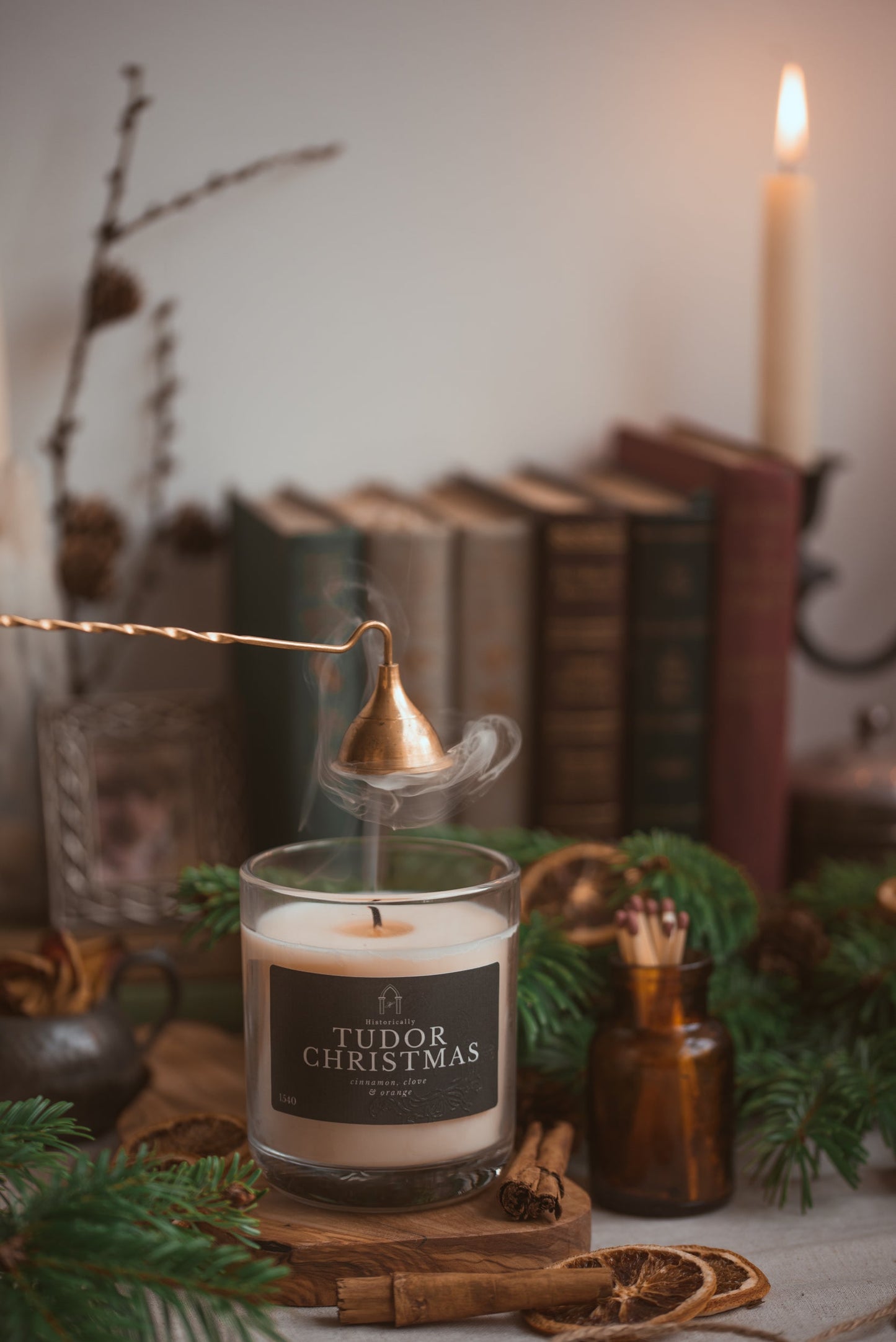Historically
Tudor Christmas
Tudor Christmas
Couldn't load pickup availability
Festive Tudor Yuletide: Regal Merriment.
In the grandeur of the Tudor courts, Christmas festivities shimmer with opulence. Spirited cinnamon, warming clove, and zesty orange intertwine, recapturing the extravagant feasts and joyful revels in the frost-kissed Tudor era.
Share
Scent Notes
Scent Notes
cinnamon, clove & orange
Delivery & Returns
Delivery & Returns
Dispatch times
Our candles are made to order and most will take between 1-7 business days to dispatch.
However, if you are wanting your order sooner or for a specific date please get in touch (via email or in the message box at checkout) and we can sort something out for you!
Delivery Times
We currently offer standard delivery with Royal Mail 2nd class which should arrive between 2-3 days after dispatch and Royal Mail 1st class which should arrive between 1-2 days after dispatch.
NOTE: Please note that during the months of November and December we use Royal Mail Tracked. This is more expensive than normal but we have found means that your parcels are safe and get to you in time.
Shipping outside the UK
We are more than happy to ship to America and Australia, unfortunately we cannot ship to the EU at this time.
If you would like an order to be delivered to Australia please do not hesitate to contact us via our contact page, email or Instagram message and we will calculate the shipping costs for you and complete your order via invoice.
Please note that customers are responsible for paying any import VAT, taxes and fees.
What is your return policy?
Please note earrings cannot be returned and refunded for hygiene reasons.
We are happy to accept returns if you are unhappy with your purchase.
Contact us within: 14 days of delivery
Dispatch items back within: 30 days of delivery
Request a cancellation within: 24 hours of purchase
Buyers are responsible for return postage costs. If the item is not returned in its original condition, the buyer is responsible for any loss in value.
Item damaged in transit
Sometimes accidents happen.
If you receive a parcel that has been damaged in the post please send a picture to us showing the damage within 48 hours of your parcel being delivered and we can discuss options with you. No worries.
Safety Information
Safety Information
I. Keep candles away from curtains, fabrics, furniture, and draughts.
II. Avoid placing candles under shelves; maintain a 3-foot (1-meter) clearance above.
III. Prevent contact with clothes and hair; place candles out of reach.
IV. Keep children and pets at a distance from candles.
V. Maintain at least 4 inches (10cm) between burning candles.
VI. Extinguish before moving; avoid objects falling into hot wax.
VII. Never leave burning candles unattended.
VIII. Safely extinguish with a snuffer or spoon, not by blowing.
IX. Double-check to ensure candles are completely out.
Scent History
Scent History
Cinnamon
Cinnamon, with its warm and aromatic flavor, boasts a rich history that stretches back thousands of years. Originating from the inner bark of trees belonging to the Cinnamomum genus, this spice's roots can be traced to Sri Lanka (formerly known as Ceylon) and parts of India. Ancient civilizations, including the Egyptians, were among the first to use cinnamon for its delightful taste and medicinal properties. Cinnamon's significance expanded through trade routes in antiquity, such as the Silk Road, making it a valuable commodity. It was so highly prized that it became a symbol of wealth and luxury in Europe during the Middle Ages. This rarity also led to tales of mythical creatures guarding its source. During the Age of Exploration, European nations embarked on voyages to find direct routes to the spice-rich regions, including those where cinnamon grew. This pursuit played a role in the discovery of new lands and the exploration of uncharted territories. Today, cinnamon remains a beloved spice worldwide, used in culinary creations, beverages, and even perfumes. Its historical journey from a rare luxury to a kitchen staple is a testament to its enduring allure and versatility in various cultures and cuisines.
Clove
Clove, renowned for its aromatic and pungent flavor, boasts a storied history dating back thousands of years. Native to the Maluku Islands in Indonesia, cloves were among the earliest traded spices globally, prized both as a culinary delight and for their medicinal properties. In ancient China and India, cloves were valued for their potential to address dental, digestive, and respiratory ailments, with clove oil being a key component in traditional remedies. Their journey along ancient spice routes popularized cloves across Europe during the Middle Ages when they were considered a luxury spice due to high demand and cost. In recent history, global clove production expanded, making this spice accessible worldwide. Today, cloves are integral to various cuisines, offering depth to dishes, and are used in dental care products, perfumes, and traditional smoking blends. This enduring appeal showcases cloves' rich history and their role in the global spice trade and cultural exchange.
Orange
Oranges, renowned for their vibrant color and refreshing taste, boast a history tracing back to ancient China. The orange tree, Citrus sinensis, likely originated in Southeast Asia and was mentioned in Chinese literature as early as 314 BC. From China, the orange's popularity spread to India and the Mediterranean through ancient trade routes. Although ancient Romans and Persians cultivated oranges for their sweet and tangy flavor, these fruits were initially bitter and primarily used for medicinal purposes. During the Age of Exploration, Portuguese and Spanish explorers introduced sweet oranges to the Americas, particularly in areas that would become Florida and California, giving rise to various orange varieties, including the renowned Valencia and Navel oranges. Today, oranges are a global staple, enjoyed fresh, as juice, or as a versatile ingredient in countless culinary delights, symbolizing health and vitality worldwide.




